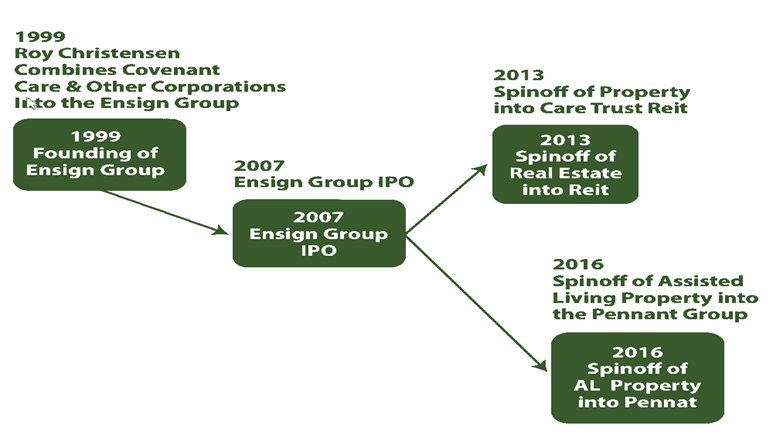By:
Dave Kingsley
Unchecked Bigness is One Factor Threatening our Democracy & Our Health
Big corporations and big unions can be and indeed are in many cases bad for our health. For instance, UnitedHealth, Centene, Cigna, CVS, and other healthcare-related corporations in the top 30 of the Fortune 500 have interjected themselves into our publicly funded medical care system as financial intermediaries and major influencers of government policy.[1] Their motivation is protecting and enhancing shareholder value in the uniquely privatized, taxpayer funded U.S medical delivery structure. They make money from sickness not wellness. Prevention does not add to their bottom line, but treatment is quite lucrative – never mind the public interest.
Big unions, which initially have laudable missions and continue to do much good, sometimes tend to degenerate into self-serving actors without concern for the health and well-being of the public. This is particularly the case when our federal, state, and local governments attempt to protect our health from the dangers of fossil fuel. Public efforts to stop irrational projects such as the Keystone pipeline often fail due to the power of the building trade unions in concert with industrial interests.[2] The United Auto Workers and the big three auto manufacturers have successfully tapped the brakes on the Biden Administration’s planned transition to electric vehicles. Air quality and the threat to humanity from climate system meltdown are secondary to the short-term interests of big unions and gas engine manufacturers.
Indoctrination, Manipulation & Conditioning of the American People
Why are we, the American people, passive and compliant in the face of an assault by special interests on our dignity and well-being? The deterioration of service and quality at excessive prices is not only happening in healthcare. We see it in airline travel, brick and mortar and online retail, technology (computers, software, and apps) – you name it. Predatory economics have become the name of the game, which is simply this: “How can we lower quality and squeeze more out of customers/patients through lying and deceitful propaganda?”
Customers and patients are not at fault. The dystopian part of the U.S. economy did not come about as the result of a revolution. The wealth and political power of investors, owners of vast amount of assets, and corporations have been able to move economic behaviors incrementally and deceitfully from the unthinkable to the normal. Propaganda and duplicity by forces with the resources to falsely convince the public that they are living in the best there is in the best of all possible worlds have been effective. People tend to trust officious and authoritative, i.e. powerful organizations and individuals. So, they hunker down and take it as they get fleeced through small incremental price increases and lower quality of goods and services.
The primary healthcare industry business model can be compared to the air travel industry. They incrementally lower quality and add value to revenue for investors at the expense of patients and consumers of medical goods.
Through dissemination of false advertising and stories promoted by industry PR, the mainstream media – perhaps unwittingly – is helpful to corporate predators. As airlines herd passengers around like cattle and stuff them into increasingly uncomfortable flying tubes at ungodly prices, the media takes up the airlines’ cause by spreading the image of travelers as “unruly.” The poor airlines are forced to put up with all those bad people. Should I believe that or my lying eyes? I have traveled on the airlines extensively over the past 60 years. I used to love it. Now I hate it. Furthermore, mostly what I see are cooperative, well-behaved people trying to adapt and endure the indignities, discomfort, and stresses heaped on them by extremely profitable, oligopolistic, and deregulated airlines.
Industries have leveraged highly sophisticated techniques of mass psychology for the purpose of pacifying the traveler, nursing home patients and their families, customers of health insurance corporations, users of computer applications, and so forth. You probably don’t know that A Place for Mom is owned by private equity, that they don’t choose the best place, rather they choose the place that will pay them. Did you know that the ostensibly pro-retiree-AARP’s deal with UnitedHealth is designed to lead the elderly down a primrose path into the waiting arms of the health insurance industry while the pro-beneficiary-Medicare program is destroyed?
When you don’t see that the fine print included autorenewal, too bad. That’s your problem. You have a serious glitch and need help. That’s been outsourced to the Philippines. Good luck with that. You didn’t know that the 5-minute life flight from Taos to Albuquerque cost $70,000 and was out of network? Now you’re stuck with the bill and will never find out what a reasonable price would be and why it’s not covered by your Medicare Advantage plan. You hear that those unfortunate, underpaid nursing home corporations are not making enough money to treat us and family members humanely. You could check their finances and verify what they are saying but the government allows them to operate behind a veil of secrecy.
Big Government is Not Always Bad
As the bottom ninety percent of Americans in income and wealth make their slow descent into economic serfdom, government agencies that are supposed to protect us have been neutered and checked by the politics of self interest and pseudoscientific economic theory. Nonsense from major university economic departments, indeed from the overwhelming majority of economists, has been adopted as gospel by politicians and the media. Despite of the obvious failure and detriment from this proto-religious canon, it continues unabated and is as strong as ever. The EPA, FTC, and other major government regulators have been reduced to going along to get along. This all while the ecosystem is collapsing, public health is deteriorating, and wealth and power is increasingly concentrated in fewer entities and individuals.
The free-market, trickle down, government-busting theories of faux libertarians such as Hayek and Friedman have proven to be a chimera. But that has become the underpinnings of U.S. government and economics. Political power resides in the so-called center right to center left. The Democratic Party and the Republican Party are both responsible for deregulation of corporations and privatization of government services. It was President Carter that deregulated air travel, trucking, and banking industries. He kicked off a deregulation craze that has left the American people in an extremely vulnerable position. President Reagan was a fanatical government hater and adopted the right-wing worship of corporations along with a cynical view of people that our-constitutional government is designed to serve. The Democrats have made a little noise about the dismantling of government but have for the most part gone along with it and have even participated in it.
What Can the American People Do About Their Economic Plight?
The first step in changing a corrupt system is exposing it. The first step in exposure is to stop believing propaganda. The AARP is not a friend of retirees – they are selling us out with their UnitedHealth partner. A Place for Mom is not interested in your mom – they are looking to turn a quick buck. Prevagen is snake oil. Balance of Nature is a worthless capsule. The FEC is allowing false advertising and consequently you can be robbed of your hard earned money at CVS and Walgreens. All the available evidence we can amass tells us that the nursing home industry is quite lucrative for investors. But the investors’ narrative of financial hardship is dominating the conversation. Let’s put a stop to that.
The second step in systems change is changing the narrative. Government is not bad – it is good. Regulation is important. Not long ago, I confronted some state legislators at a hearing about weak oversight of nursing homes and their finances. That hadn’t been done before in that particular legislative committee. Advocates need to take a strong stand in exposing fraud.
The status quo is not OK. Believe it. Demand change. Pick up the phone. Send emails and get your friends, neighbors and relatives to call and write. Politicians respond to volume. So, learn about an issue and organize people to confront senators, congresspersons, and state legislators. Get people to pressure the media to stop selling lies. Learned helplessness is our enemy. If you think that Medicare Advantage is a good deal, it may be for you, but down the road all Medicare will be controlled by a few insurance conglomerates. They will continue to create financial intermediaries such as pharmacy benefit managers for the purpose of adding value to their revenue at the expense of our care.
Support those think tanks in Washington that you know are on our side. The Committee to Preserve Social Security & Medicare is fighting for us. The Committee for a Responsible Federal Budget and the Concord Coalition are working to reduce Social Security and Medicare benefits. I know these organizations well and have dealt with all of them. The Committee for a Responsible Federal Budget and the Concord Coalition were organized with the backing of the late multi-billionaire Peter G. Petersen who was on a crusade to privatize Social Security & Medicare.[3] If you think that his legacy is not a major negative influence in your life, you would be wrong. Furthermore, politicians and the media are treating the Washington network he left behind with deference and respect it doesn’t deserve. Believe it! Fight it!
[1] In 2000, none of these companies were in the Fortune 500 top 30. Now UnitedHealth is the 5th largest corporation in the U.S. and 10th largest in the world. CVS is the 6th largest U.S. corporation and healthcare related corporations make up one-third of the top 30 U.S. companies in the Fortune 500.
[2] I spent a career in labor relations on management’s side of the table. Most of the unions with which I negotiated were building trades unions such as sheet metal workers, operating engineers, laborers, pipe fitters, boiler makers, and electricians in mining, construction, and heavy manufacturing. I believe that unions are good thing until they aren’t. The companies I worked for believed in good faith bargaining, but we took strikes and work stoppages that were counterproductive for the union members, companies, and the public. At this stage of our economic system, I don’t think that we can leave the plight of workers to the unlikely event that they will organize and improve their standard of living. Politicians need to step up. I do not want to overlook the good that labor unions have contributed to the working classes. They have fought for health & safety, an end to child labor, better pay and benefits so richly deserved by the people without whose labor corporations would not exist. I think that they still fight hard for social justice. We have much more good from the labor movement than bad.
[3] Working with the Committee to Preserves Social Security, the Gray Panthers, and other groups I have spent countless hours over the decades in Washington, D.C. fighting the duplicitous cabal of Peter G. Petersen funded think tanks and other Wall Street back entities trying to grab off the $trillions in tax-funded programs for investors. It’s a tough fight and one that is undermined by organizations that appear to be do-gooders but are really representing the other side.


